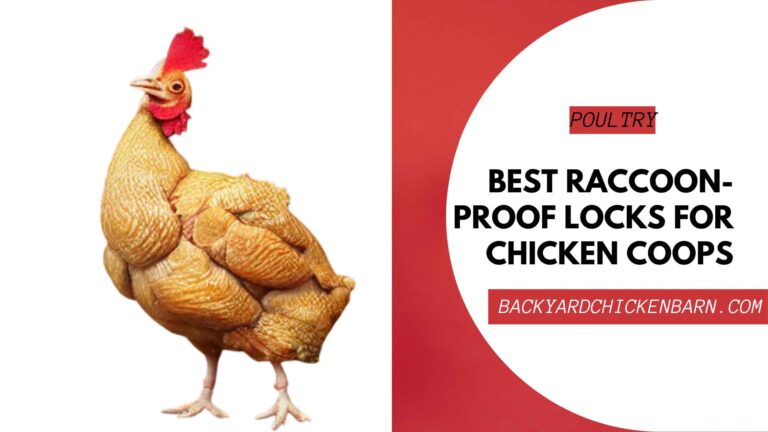Are Broilers Male or Female? [EXPLAINED]
As a curious farmer and poultry enthusiast, I often found myself intrigued by some of the most commonly asked questions in the industry. Among the foremost queries, a standout was, “Are broilers male or female?” In my pursuit of knowledge, I decided to delve deep into the world of broilers, and what I discovered was quite enlightening.
Broilers can be both male and female. They are not distinguished by their gender but by their purpose, which is rapid growth for meat production.
Understanding Broilers: A Brief Overview
- What Defines a Broiler?Broilers are a group of chicken breeds specifically raised for meat production. Their genetic makeup allows them to grow quickly, typically reaching market weight in about 6 to 7 weeks.
- Gender Distribution in Broiler Production:When broiler chicks hatch, both males and females are generally raised together in the same environment. The gender ratio is roughly 50:50, mirroring nature’s usual distribution.
- Growth Rate Variations:While both male and female broilers are raised for meat, it’s interesting to note that male broilers often grow slightly faster and become larger than their female counterparts by the time they reach market age.
- The Fate of the Sexes:In some commercial settings, after the initial few days post-hatching, male and female broilers might be separated based on specific production goals. For instance, some farms may prefer male broilers for larger cuts of meat, while others might favor females for certain product lines.
ALSO SEE: Vaccination Schedule for Broilers in Nigeria
Clearing Common Misconceptions:
It’s a misconception that only male chickens are raised as broilers. This confusion may stem from the practice in the egg industry where male chicks, being unable to lay eggs, often face an unfortunate fate. However, in the broiler industry, both genders have equal value, as the primary goal is meat production.
In my journey to uncover the truth about broilers, understanding the unbiased role of gender in this sector was a revelation. Recognizing that both male and female chickens play an equally significant role in our food chain not only enriched my knowledge but also instilled a deeper respect for the intricacies of poultry farming.
So, the next time you enjoy a broiler dish, remember: gender isn’t the flavor; it’s the care and quality of raising that truly counts!
FAQs on Broilers: Male or Female
- Q: Are broilers specifically male or female? A: No, broilers can be both male and female.
- Q: What is the primary purpose of a broiler? A: Broilers are raised specifically for meat production.
- Q: How are broilers different from other chickens? A: Broilers have a genetic makeup that allows for rapid growth, typically reaching market weight in 6 to 7 weeks.
- Q: Is the gender ratio of broiler chicks equal? A: Yes, the gender ratio is roughly 50:50 when broiler chicks hatch.
- Q: Do male broilers grow faster than females? A: Yes, male broilers often grow slightly faster and become larger than females by market age.
- Q: Are male and female broilers raised separately? A: In some commercial settings, they might be separated based on specific production goals.
- Q: Why might some farms prefer male broilers? A: Some farms might prefer male broilers for larger cuts of meat.
- Q: Why might female broilers be favored in some situations? A: Some farms might favor females for certain product lines.
- Q: Are only male chickens used for meat in the poultry industry? A: No, both male and female broilers are used for meat production.
- Q: How long does it typically take for a broiler to reach market weight? A: Broilers usually reach market weight in about 6 to 7 weeks.
- Q: What’s the difference between broilers and egg-laying hens? A: Broilers are raised for meat, while egg-laying hens are raised to produce eggs.
- Q: Are male chicks used in the egg industry? A: Male chicks in the egg industry, being unable to lay eggs, often face an unfortunate fate.
- Q: Is the flavor of broiler meat affected by its gender? A: No, gender doesn’t determine flavor. The care and quality of raising influence the meat’s quality.
- Q: Are there any physical differences between male and female broilers? A: Male broilers often grow larger than female broilers by the time they reach market age.
- Q: What defines the quality of broiler meat? A: The quality is determined by the care during raising, feed quality, and overall health, not by gender.
- Q: Are broilers a specific breed of chicken? A: Broilers are a group of chicken breeds raised specifically for meat production.
- Q: Do both genders of broilers have the same lifespan? A: Typically, both reach market weight around the same age, but males might grow slightly faster.
- Q: Do male and female broilers eat the same type of feed? A: Generally, yes, but some farms may adjust feed based on specific production goals.
- Q: Is there a difference in meat texture between male and female broilers? A: The primary difference is in size, not texture. However, overall care can influence meat texture.
- Q: Why are broilers’ growth rates so rapid? A: Their genetic makeup is optimized for quick growth to meet market demands.


